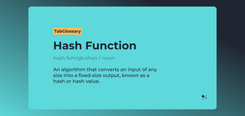In this article, we will discuss what a gamma squeeze is, how it works, and the most well-known examples of a gamma squeeze.
What Is a Gamma Squeeze?
A gamma squeeze is a phenomenon in options trading in which a large number of investors buy call options, forcing the market maker to take a large short position on the underlying asset and buy increasing amounts of the underlying asset to hedge. This causes the price of the asset to increase, which further incentivizes investors to buy call options, creating a positive feedback loop that can drive prices to extreme levels.
What Are Call Options?
Call options are financial derivatives that grant investors the right to purchase a certain amount of an asset at a predetermined price (known as the strike price) by a particular date. These options generate profits for investors when the underlying asset’s price is higher than the strike price at expiration or, in other words, when the contract expires in-the-money (ITM).
An option contract is typically made with a market maker — a company or an individual who provides liquidity for the market and is willing to buy or sell different contracts to profit from the bid–ask spread or transaction fees.
How Does a Gamma Squeeze Work?
When a large number of investors buy call options, the market maker is forced to take a large short position on the underlying asset. This puts the market maker at great risk if the price of the underlying asset rises and the contracts are in-the-money (ITM) at expiration. To counter this, the market maker will buy the underlying asset to hedge their position, which leads to further upward pressure on the asset’s price. This phenomenon in options trading is commonly known as a gamma squeeze.
What Are Gamma and Delta?
Gamma and delta are two of the four “greeks” — metrics that measure the sensitivity of an option's price to a variety of factors such as time, volatility, and underlying price.
Delta is usually defined as the measure of how much an option price will change in response to one point move in the underlying asset. For instance, if a call option has a delta of 0.30, then for every $1 move in the underlying asset, the option price will move $0.30 in the same direction. Call options’ delta fluctuates from 0 to 1.
Since delta is the partial derivative of the option’s price over the price of the underlying asset, it changes with the market price of the underlying asset. The closer the price of the underlying asset is to the option’s strike price, the greater impact it has on the change in the price of the option’s premium and the higher the delta. Thus delta can serve to assess the probability of an option contract expiring in the money (ITM).
Out-of-the-money options have a delta value close to 0, at-the-money options have a delta value close to 0.5, and deep-in-the-money options have a delta value close to 1. Gamma is the rate at which an option’s delta changes.
Market Makers and Hedging
Market makers often use delta to calculate how much they need to hedge in order to maintain a risk-neutral portfolio. It’s important to understand that market makers do not usually hold as much of the underlying asset as it takes to fully cover all the options they have sold because if the delta is less than 1, the option premium does not go up proportionally to the price of the underlying asset.
For instance, if a market maker sells a call option with a current delta of 0.3, and the underlying asset’s price goes up $1, they will only need to purchase 0.3 of the underlying asset to cover the option. This is because the option premium will only move up $0.30 (0.3 x $1) in response to the $1 price increase in the underlying asset.
A gamma squeeze can occur if the underlying asset's price increases rapidly, making the delta go up. This will cause the market maker to have to buy an increasing amount of the underlying asset to hedge their position, leading to the price of the asset rising even further and creating an ongoing feedback loop.
Gamma Squeeze vs. Short Squeeze
A short squeeze is similar to a gamma squeeze, except that instead of impacting market makers, it affects individual traders who have short positions in the asset experiencing a rapid price increase.
What Have Been Some Major Gamma Squeezes in the Past?
AMC Entertainment
One of the most notable gamma squeezes in recent history was the AMC Entertainment (AMC) stock taking off in May-June 2021. On May 21st, AMC’s stock price closed at $12.08. By June 2nd, the stock had surged to $62.55, an increase of 418%.

Source: TabTrader app
The surge was the result of a coordinated effort by small retail traders on Reddit, targeting hedge funds that had shorted AMC’s stock. These traders have presumably done so to support AMC Entertainment in light of the financial impacts of the COVID-19 pandemic and to take revenge against the hedge funds that have been profiting from the company’s struggles. After the gamma squeeze was over, however, the stock price quickly collapsed to its normal level.
GameStop
In January 2021, GameStop (GME) experienced a gamma squeeze that sent its price skyrocketing. This event was similar to the AMC Entertainment gamma squeeze in that it was driven by retail investors, who coordinated on social media.

Source: TabTrader app
Like AMC, GameStop was reportedly heavily shorted by large hedge funds after rumors of its bad performance in late 2020. In response, retail investors aggressively bought the stock and accumulated extensive call options, which triggered a gamma squeeze.
At its height on January 28, the gamma squeeze caused GME to reach a pre-market value of around $480, nearly 45 times its $10.76 valuation on January 21st. Ultimately, the stock price returned to its pre-gamma squeeze level and closed at $13.38 on February 4th.
How to Identify a Gamma Squeeze?
- Open interest. Open interest is the total amount of outstanding contracts in the market. When a gamma squeeze is taking place, open interest is usually high as a large number of investors buy call options.
- Consistent price increase in the underlying asset’s price. As mentioned above, a gamma squeeze is usually characterized by a continuous upward trend in the price of the underlying asset.
- Catalyst. Gamma squeezes are often driven by a particular catalyst, such as news or rumors about the underlying asset’s performance.
How to Trade in a Gamma Squeeze?
If a trader is looking to take advantage of a gamma squeeze, they can consider buying call options or the underlying asset as early as possible during a gamma squeeze and look to exit the position as soon as the price starts to decline. It’s important to remember, however, that gamma squeezes are always short-lived and can reverse very quickly, so traders need to exercise proper risk management at all times and use stop-loss orders to avoid losses.
Conclusion
Gamma squeezes are a powerful phenomenon in options trading that can create significant short-term profits for savvy traders. However, they can also be extremely risky and require careful timing and risk management. As such, traders should approach gamma squeezes with caution and always have an exit strategy in mind.
Want to learn more about various trading strategies and how to make smart trading decisions? TabTrader Academy is here to help!




